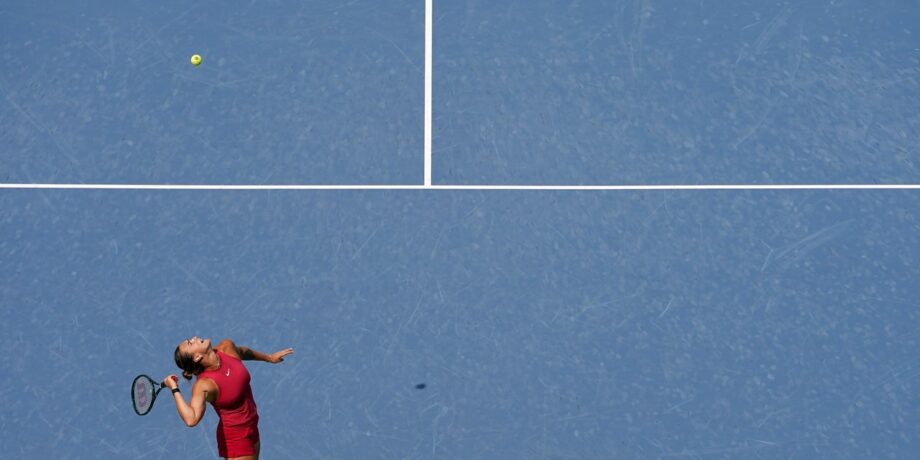If watching Novak Djokovic dominate on the clay at the Paris Games inspired you to dig deeper into all things courtside—including trying to figure out how tennis scoring actually works—you picked the perfect time. Just over two weeks after the Olympic closing ceremony on August 11, one of the sport’s biggest and most hotly anticipated tournaments, the US Open, will kick off at New York’s Billie Jean King National Tennis Center with first-round matches in the men’s and women’s singles categories.
Given that the world’s top players will show (including Djokovic, who actually won it all back in 2011, 2015, 2018, and 2023), you’ll definitely want to tune in. But you’ll probably want to make sure you know how the game works first so you can follow along. You might already have heard that “love” counts for nothing, but what about terms like “deuce,” “ace,” and “double fault”? And we haven’t even dug into the fact that the scoring system starts at 0 and for some reason maxes out at 40 yet.
To make the sport a little more approachable, we compiled an easy-to-digest guide on how tennis scoring actually works. Believe us: With the Open fast approaching, it’d be your “ad-in” to study up.
How does tennis scoring work?
Chances are you’ve heard the phrase “game, set, match” before. Well, guess what: It’s a tennis thing! These words describe the three phases of the sport.
Games come first, followed by sets, and, finally, matches. As the United States Tennis Association (USTA) explains it, the goal is to score enough points to win a game, then win enough games to win a set, and then win enough sets to win a match. Still with us? Good.
How do you score a point in tennis?
You’re going to need to score points if you want to win games. The good news is, there are a few different ways to get this done. One is if you hit the ball to your opponent, it lands within bounds of the court, and they fail to hit it back to you. This can be while you’re serving—if it completely whizzes by them and they can’t even get a racket on it, that’s called an “ace”—or just while you’re rallying, or hitting the ball back and forth. Other things that can score you a point: Your opponent misses the ball entirely, allows it to bounce more than once before hitting it back, or whacks the ball out of bounds.
You can also score a point if your opponent smashes a return into the net. But! If you hit back a shot, it glances the net, then bounces over and into bounds, that’s considered a good return. Point, you.
Another cool thing: You can actually score a point—and technically even win a game—without ever touching the ball. If your opponent biffs a serve, that’s called a “fault.” If they do it twice in a row, they’ve just committed a “double fault,” and you’ve scored the point.
How in the world do you keep track of these points?
For tennis tyros, the scoring system is one of the more befuddling aspects of the sport. But it’s actually pretty easy to digest once you learn a few basic terms. First of all, the scoring:







